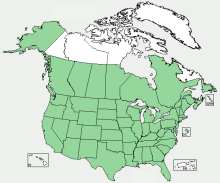Hedge Bindweed
Botanical name: Calystegia sepium
Family: Bindweed (Convolvulaceae)
Collectability: famine food - unsafe but potentially nutritious with careful preparation.
Common, widespread, weed
Main benefit
 source of carbohydrates
source of carbohydrates
Use - overview









Features and Identification
Habitat
Type: hedges
Distribution: throughout northern hemisphere
Other: locally prolific
General
Growth type: climbing herb
Cycle: perennial
Height: up to 3 meters
 Leaf
Leaf
Shape: arrow
Edge: smooth
 Stem
Stem
Other: winds around other plants for support
 Flower
Flower
Shape: bell
Diameter: 35 mm
Petals/sepals: 2 bracts, 5 narrow sepals
When: June to September
Colour:
Type: hedges
Distribution: throughout northern hemisphere
Other: locally prolific
General
Growth type: climbing herb
Cycle: perennial
Height: up to 3 meters
 Leaf
LeafShape: arrow
Edge: smooth
 Stem
StemOther: winds around other plants for support
 Flower
FlowerShape: bell
Diameter: 35 mm
Petals/sepals: 2 bracts, 5 narrow sepals
When: June to September
Colour:

Distribution Map

Caution Notes
 laxative - can cause gastric upset.
laxative - can cause gastric upset.May be mistaken for Great Bindweed (C. silvatica)
When Available?
 April to August
April to August April to September
April to September all year
all year
Culinary Use
How to Consume


 cook
cook
Nutrition
 starch, sugar
starch, sugar
Used as ...


 food
food


 cook
cookNutrition
 starch, sugar
starch, sugarUsed as ...


 food
food
Medicinal Use
Action:
 demulcent, diuretic, febrifuge, purgative
demulcent, diuretic, febrifuge, purgative
May treat:
 as poultice: boils will erupt within 24 hours
as poultice: boils will erupt within 24 hours
 demulcent, diuretic, febrifuge, purgative
demulcent, diuretic, febrifuge, purgativeMay treat:
 as poultice: boils will erupt within 24 hours
as poultice: boils will erupt within 24 hours
Other Use
 temporary cordage
temporary cordage
Key
Plant parts:
 leaf
leaf
 stem or trunk
stem or trunk
 sap
sap
 root, bulb, tuber and other below ground parts
root, bulb, tuber and other below ground parts
 flower
flower
 fruit
fruit
 seed
seed
Use:
 culinary use
culinary use
 medicinal use
medicinal use
 household use
household use
Other:
 caution
caution
 leaf
leaf stem or trunk
stem or trunk sap
sap root, bulb, tuber and other below ground parts
root, bulb, tuber and other below ground parts flower
flower fruit
fruit seed
seedUse:
 culinary use
culinary use medicinal use
medicinal use household use
household useOther:
 caution
caution
Glossary
General Glossary
Glossary of Medicinal Terms and Nutritive Substances
- bract: leaf of scale below calyx; parts of cone
- calyx: collection of individual or, usually, joined sepals
- sepal: protects bud before flower opens, forms leaf-like ring at base of flower, usually green
Glossary of Medicinal Terms and Nutritive Substances
- demulcent: rich in mucilage, soothes or protects irritated or inflamed tissue (especially mucousa)
- diuretic: increases secretion and elimination of urine
- febrifuge: reduces fever; use only for dangerously high temperature; a raised temperature is the body's way of burning up the pathogen
- purgative: produces evacuation of the bowels (more severe than aperients or laxatives)




